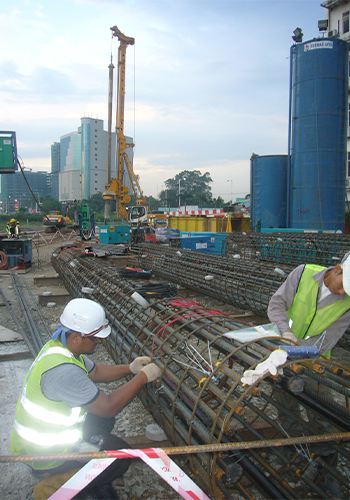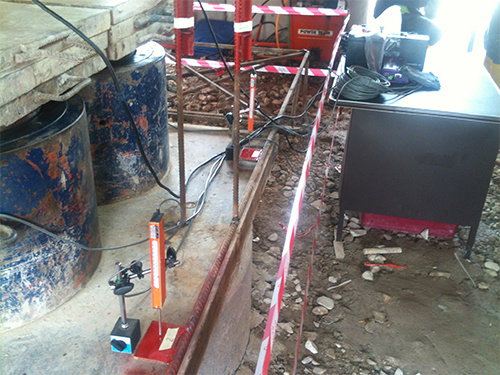Test Pile Instrumentation and Monitoring

Test Pile Instrumentation and Monitoring
Test pile is often instrumented with strain gauges for derivation of the pile’s load distribution and unit skin friction. The type of strain gauge is usually vibrating wire embedment type which is particular suitable for pile testing purpose. The strain gauges output is often wired to a data logger for logging which permits data transfer to PC for post-test processing and analysis.
The advantage of vibrating wire sensors over more conventional types lies mainly in the sensor output, which is a frequency rather than a voltage. Frequencies can be transmitted over long (> 2000 m) cables without appreciable degradation of the signal caused by variations in cable resistance, which can arise from water penetration, temperature fluctuations, contact resistance or leakage to ground. This factor, coupled with the ruggedness of strain gauge results in sensors which exhibit excellent long-term stability and which are ideally suited for long-term measurements in adverse environments.
Part of the instrumented test pile is automated settlement recording using logger and displacement transducer. The logger is an industrial logging machine that is designed to be compatible with almost all types of sensors. In foundation application, pile head displacement reading can be logged in a close interval such as every 1-minute, and the current readings can always be accessed via the LCD display on the logger.
This deployment of automated data acquisitions greatly improved the efficiency of test data recording and virtually eliminates all human error in the recording process, and thereby provides more confidences on the load test result.
Readings can be transferred to PC for post-test processing and plotting of load-settlement graphs. This enhances the speed of reporting as load settlement readings will no longer required to be fed into the PC manually.

